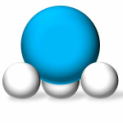 An article provided by: Vicki Schneider, Principal Consultant at Schneider Risk Management As we shared with you in a previous article, the U.S. EPA (EPA) issued an Enforcement Alert (February 2015) describing how facilities using anhydrous ammonia are under scrutiny by EPA. The Alert primarily addressed facilities that contain anhydrous ammonia above the threshold quantity (TQ) of 10,000 lbs.; however, these warnings should not be ignored by those companies with systems under the TQ. On the contrary. The risks associated with an ammonia system incident are similar whether you have 10,000 lbs. or 1,000 lbs. Pipes and valves leak, unintended consequences happen. The severity might be less because a release may not be as big and may not travel as far and thus would likely affect fewer people. But, if even one person has the potential to be injured because of an ammonia incident, isn’t that enough to implement safety precautions?
The risks, the chances, the opportunities for an incident to occur are similar – unless you take steps to prevent them. It doesn’t matter how much material you have on site. The EPA supports this premise. It added the General Duty Clause (GDC) to the Clean Air Act (CAA Section 112(r)(1)) in 1990. Page 2 of the Enforcement Alert describes the requirements of the GDC and there is no mention of a threshold quantity. All facilities, large and small, are subject to the General Duty Clause: “Each employer shall furnish to each of his employees employment and a place of employment which are free from recognized hazards that are causing or are likely to cause death or serious physical harm to his employees” -29 USC 654(a)(1) The Alert provides these GDC highlights and states that all facilities are responsible for:
So if your facility has anhydrous ammonia, it should be managed in a way that promotes safety, reduces the opportunity for a release and sends people home safely to their families each and every day. If you have any questions or would like some help navigating these complex regulations, please fill free to contact us.
1 Comment
|
|

 RSS Feed
RSS Feed
